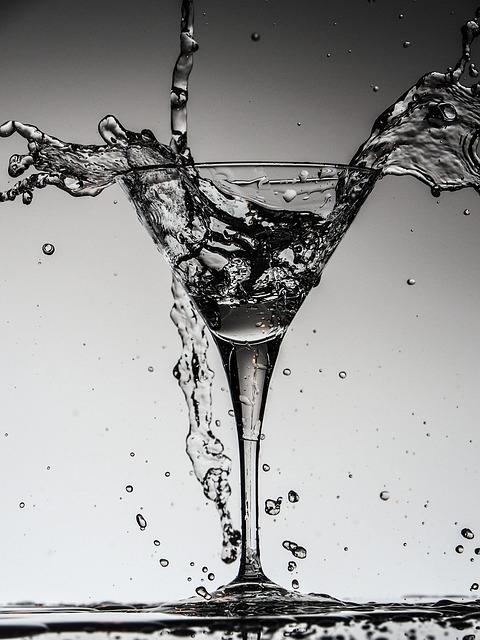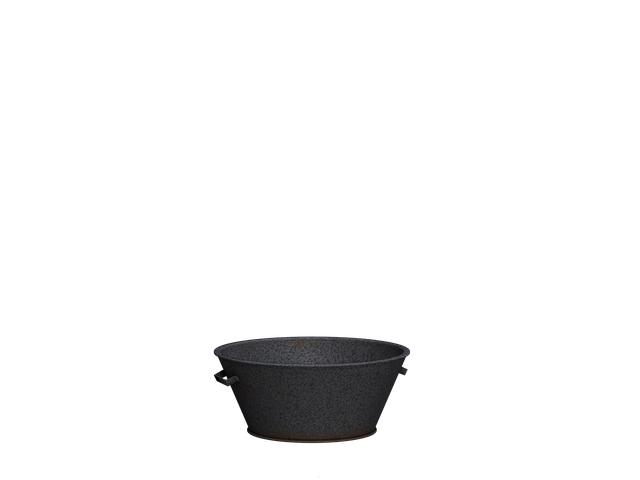Ice Bath Weight Loss: Can Cold Baths Actually Burn Fat?

Have you ever wished that shedding those extra pounds was as effortless as taking a relaxing dip in an ice-cold bath? Well, guess what? The concept of using ice baths for weight loss has been buzzing around the fitness world lately, but can plunging into freezing temperatures really help you torch fat? In this informative article, we dive deep into the science behind ice bath weight loss, unraveling the truth behind this chilly trend. Get ready to uncover the facts and separate fiction from reality as we explore whether cold baths can truly melt away those stubborn pounds. So, grab a warm cup of tea and prepare to be enlightened about the intriguing connection between ice baths and fat burning.
Contents
- 1. Exploring the Science Behind Ice Baths: How Cooling the Body May Impact Weight Loss
- 2. Uncovering the Link between Cold Exposure and Fat Metabolism: What Research Suggests
- 3. The Role of Ice Baths in Enhancing Calorie Burning: Understanding the Mechanisms
- Understanding the Mechanisms
- 4. How Cold Immersion Influences Brown Fat Activation: A Potential Fat-Burning Strategy
- 5. The Impact of Ice Baths on Exercise Recovery and Weight Loss: Finding the Right Balance
- 6. Maximizing the Benefits of Ice Baths for Weight Loss: Tips for Safe and Effective Practice
- 10. Consulting with Experts: What Do Fitness Professionals and Medical Practitioners Say about Ice Baths for Weight Loss?
1. Exploring the Science Behind Ice Baths: How Cooling the Body May Impact Weight Loss
Ice baths, also known as cold baths, have gained popularity in recent years as a method for weight loss. But can sitting in a tub of icy water actually burn fat? Let’s explore the science behind ice baths and how the cooling of the body may impact weight loss.
When the body is exposed to extreme cold, it activates a process called thermogenesis. Thermogenesis is the production of heat in the body, which is primarily generated by brown adipose tissue (BAT). BAT is a type of fat that burns calories to produce heat and maintain body temperature.
Studies have shown that cold exposure can increase the activity of BAT, leading to a higher calorie burn. In fact, researchers found that a 15-minute cold bath can increase calorie expenditure by up to 80%. This means that sitting in an ice bath may help boost your metabolism, potentially aiding in weight loss.
2. Uncovering the Link between Cold Exposure and Fat Metabolism: What Research Suggests
In recent years, there has been growing interest in the connection between cold exposure and fat metabolism. Many people have started to wonder if taking ice baths or exposing themselves to cold temperatures can actually help them burn fat. But what does the research say?
Several studies have suggested that there may indeed be a link between cold exposure and fat metabolism. One study conducted on mice found that exposure to cold temperatures activated a type of fat called brown adipose tissue (BAT). Unlike white adipose tissue, which stores excess energy as fat, BAT thermogenically burns fat to generate heat.
Additionally, another study conducted on humans discovered that cold exposure increased the activity of brown fat, leading to increased fat burning. This suggests that cold exposure might be beneficial for weight loss.
- Increased calorie expenditure: Exposing your body to cold temperatures can increase your calorie expenditure. This is because your body needs to work harder to maintain its core temperature, which means that more calories are being burned.
- Activation of brown fat: As mentioned earlier, exposure to cold temperatures activates brown fat, which is responsible for thermogenically burning fat. By increasing the activity of brown fat, cold exposure may help promote fat loss.
- Improved insulin sensitivity: Some research suggests that cold exposure may improve insulin sensitivity, which plays a significant role in fat metabolism. Improved insulin sensitivity means that your body can more effectively regulate blood sugar levels and use fat as an energy source.
While the research is still ongoing, it’s clear that there is a potential link between cold exposure and fat metabolism. Incorporating cold baths or exposing yourself to cold temperatures might be a strategy worth considering for those looking to support their weight loss journey.
3. The Role of Ice Baths in Enhancing Calorie Burning: Understanding the Mechanisms
Understanding the Mechanisms
Ice baths have gained popularity in recent years as a potential tool for weight loss. But how exactly do they work? Let’s delve into the mechanisms behind this intriguing phenomenon.
When we submerge our bodies in cold water, our natural response is to generate heat to maintain our core temperature. This process, known as thermogenesis, requires energy and triggers our body to burn calories. Moreover, exposure to cold temperatures activates brown adipose tissue (BAT), a type of fat that helps regulate body temperature by burning white fat for energy. By stimulating BAT activity, ice baths may facilitate fat loss.
Additionally, the intense cold experienced during an ice bath causes blood vessels to constrict, forcing the heart to work harder to circulate blood throughout the body. This increased cardiovascular effort can also contribute to calorie burning and potentially enhance weight loss.
4. How Cold Immersion Influences Brown Fat Activation: A Potential Fat-Burning Strategy
The concept of using cold immersion, such as ice baths, to activate brown fat and potentially aid in weight loss has gained attention in recent years. Brown fat is a type of adipose tissue that is responsible for generating heat by burning calories. Unlike white fat, which stores excess energy, brown fat is thought to have a role in regulating body temperature and metabolism.
Studies have shown that exposure to cold temperatures can stimulate the activation and proliferation of brown fat cells, leading to an increase in energy expenditure. This activation occurs through a process called thermogenesis, where the body produces heat by burning stored fat. In other words, cold immersion can potentially activate brown fat, turning it into a fat-burning powerhouse.
While the idea of taking ice baths to burn fat may sound enticing, it’s important to note that the effects of cold immersion on weight loss are not yet fully understood. Further research is needed to determine the optimal temperature, duration, and frequency of cold exposure to maximize brown fat activation. Additionally, individual factors, such as age, body composition, and overall health, may also influence how effective cold baths are as a weight loss strategy.
5. The Impact of Ice Baths on Exercise Recovery and Weight Loss: Finding the Right Balance
Ice baths have become a popular method for enhancing exercise recovery and promoting weight loss. While the idea of submerging your body in freezing cold water may not sound appealing, many athletes swear by its benefits. But can these icy plunges actually help burn fat? Let’s dive into the science and find out.
The concept behind using ice baths for weight loss lies in the idea of cold-induced thermogenesis. When your body is exposed to extreme cold temperatures, it activates a process called non-shivering thermogenesis. This process stimulates the production of brown adipose tissue (BAT), also known as brown fat. Unlike white fat, which stores energy, brown fat burns calories to produce heat.
By immersing yourself in an ice bath, you can potentially activate your brown fat stores, resulting in increased calorie burning. However, it’s important to note that the effect may be modest and not a magic solution for shedding pounds. To achieve significant weight loss, a combination of a healthy diet, regular exercise, and lifestyle changes is still crucial.
Additionally, ice baths have shown promising effects on exercise recovery. The intense cold helps reduce inflammation and muscle soreness post-workout, allowing for faster recovery. The cold water constricts blood vessels, flushing out waste products like lactic acid, which contributes to muscle fatigue. It also promotes vasoconstriction, reducing swelling and minimizing tissue damage.
To maximize the benefits of ice baths, it’s important to find the right balance. Excessive exposure to extreme cold can have adverse effects on your health and might lead to hypothermia. It’s recommended to consult with a healthcare professional or a trained coach to determine the optimal temperature and duration for your ice baths. Remember, what works for one person may not work for another, so listen to your body and adjust accordingly.
In conclusion, ice baths can be a valuable tool for exercise recovery and may contribute to weight loss by activating brown fat. However, they should be utilized as part of a holistic approach to wellness that incorporates a healthy diet and exercise routine. When done correctly, ice baths can provide a refreshing and invigorating experience, speeding up your recovery and helping you reach your fitness goals.
6. Maximizing the Benefits of Ice Baths for Weight Loss: Tips for Safe and Effective Practice
Ice baths have gained popularity as a potential weight loss technique, with claims that the cold temperatures can actually help burn fat. While the idea may seem enticing, it’s important to approach ice baths for weight loss with caution and understanding. Here are some tips to maximize the benefits of ice baths while ensuring safe and effective practice:
-
Gradually decrease the temperature: Start with slightly cooler water and gradually decrease the temperature over time. This allows your body to adjust to the cold and prevents shock to your system.
-
Limit your time: It’s crucial not to overdo it when it comes to ice baths. Start with short sessions of around 5 minutes and gradually increase the time as your body becomes more accustomed to the cold.
- Pair it with exercise: Ice baths alone may not be enough to promote weight loss. Combine them with regular exercise and a healthy diet to achieve optimal results. Physical activity helps increase your metabolism, while the cold water may assist in reducing inflammation and enhancing recovery.
Remember, ice baths are not a magical solution for weight loss. They should be used as part of a comprehensive approach that includes proper nutrition, regular exercise, and a healthy lifestyle. It’s always advisable to consult with a healthcare professional before incorporating ice baths into your weight loss routine to ensure they are safe for you.
10. Consulting with Experts: What Do Fitness Professionals and Medical Practitioners Say about Ice Baths for Weight Loss?
When it comes to weight loss, there are countless methods and techniques that claim to be the key to shedding those extra pounds. One approach that has gained popularity in recent years is the use of ice baths or cold showers. But what do the experts have to say about this? We consulted with fitness professionals and medical practitioners to get their insights.
Fitness professionals believe that ice baths can have a positive impact on weight loss. When you expose your body to cold temperatures, it activates a process called thermogenesis. This process helps increase your metabolism and stimulate the burning of fat. Additionally, the cold temperatures can also lead to vasoconstriction, which reduces inflammation and helps with muscle recovery.
Medical practitioners, on the other hand, urge caution when it comes to using ice baths as a weight loss method. While the cold temperatures can indeed boost metabolism temporarily, the effects are often short-lived. They stress that sustainable weight loss requires a balanced diet, regular exercise, and a holistic approach. Using ice baths as the sole method for weight loss may not yield long-term results and could potentially be harmful if not done correctly.
In conclusion, while ice baths may provide temporary benefits for weight loss, it’s important to approach them as just one piece of the larger puzzle. Incorporating ice baths into a well-rounded fitness and wellness routine, alongside proper nutrition and exercise, may yield more sustainable results. As always, it’s best to consult with a healthcare professional or fitness expert before incorporating any new techniques into your weight loss journey.
In conclusion, while ice baths may sound like a trendy weight loss hack, the truth is that their impact on fat burning remains inconclusive. While some studies suggest a slight increase in metabolic activity and potential calorie burn, the effects are likely to be minimal and largely outweighed by other healthy lifestyle choices such as regular exercise and a balanced diet. So, if you’re looking to shed those extra pounds, it’s best to focus on a holistic approach rather than solely relying on icy plunges. Remember, sustainable weight loss is a journey that requires consistent effort, but with the right mindset and a well-rounded regimen, you can achieve your goals. Stay informed, stay active, and stay committed to a healthier you.













